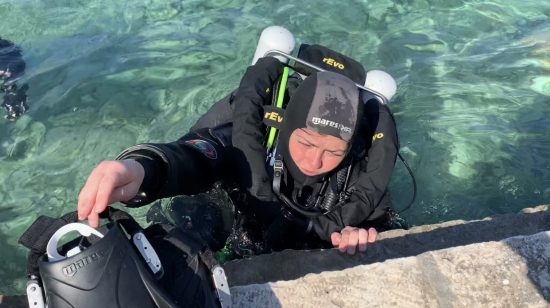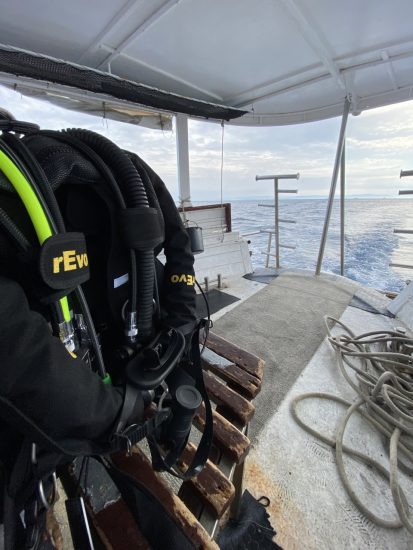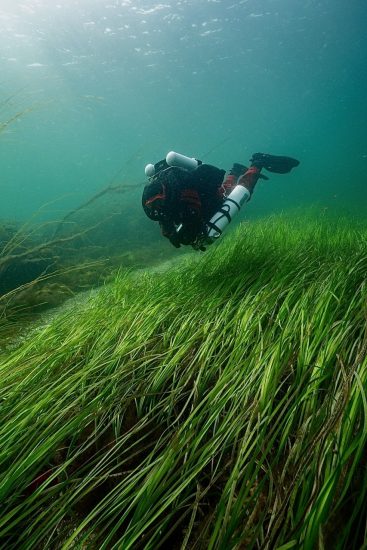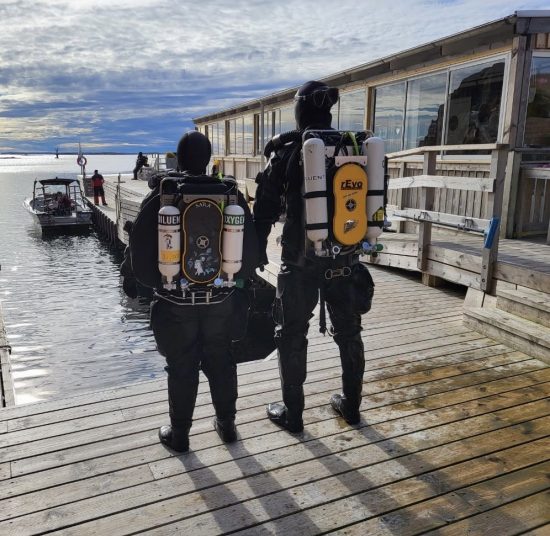






My rebreather journey started like most others, with rigorous research. I read all the tutorials I could find about what to think about when choosing your rebreather. I read about all the models that fit the criteria of the several deal breakers I had at the time:
1. It had to be CE approved
2. Backmounted
3. eCCR
4. Service and training available in Sweden
5. A good cold-water unit
I wanted to dive with a rebreather since the properties of a closed system have many advantages in overhead environments, which had been my dream since I started diving, but at the same time I knew nothing about rebreathers. At least, not from practical experience.
After talking to a lot of people, looking at what rebreathers most people were diving with in Sweden and trying out several different models, I finally chose one.
The technical rebreather community in Sweden is mainly made up of JJ-divers. In May 2019, I got my first unit, the JJ-CCR, and it was glorious. The beautiful black 4x4 of rebreather diving was mine, the unit that so many of my idols and inspirations were using, doing the diving I wished to do in the future.
Being new on the unit was wonderful and frustrating at the same time, feeling like a beginner and working towards the buoyancy and control I had had on open circuit.
At the beginning of 2020, the Corona pandemic hit and stopped all the trips I had planned on doing with the unit. Instead, these years were spent in the mines and wrecks at home in Sweden and in the Baltic Sea, as well as on my education, and I was having the time of my life. With the JJ on my back, I felt invincible, indestructible, unstoppable, and immortal. There was nothing I couldn’t do and no waters I couldn’t dive.
“You just need more practice”
After 2 years and slightly more than 200 hours on the rebreather with roughly half of them spent in the mines, I wasn’t feeling invincible, indestructible, unstoppable, or immortal anymore. Far from it. I was having doubts. About myself and about the unit, because I was struggling. At this point I was MOD2+ (70 meter) and CCR Full Cave trained, looking to do my MOD3. However, things that hadn’t bothered me before were starting to, and they were related to the weight and size of the unit, the consequences of which started to become deal breakers and quite dangerous.
I turned to my community of JJ-divers for help and ideas.
I remember one day in particular when I was preparing for a mine dive. I vented all the things that bothered me with the machine. That I had problems reaching things, the fact that I was so heavy, etc. The two other divers listened intently, and when I finished, one of them replied, “You just need more practice, you will get used to it”. The responses from others were very similar.
At the time, it seemed to follow the logic that it must be me who was the issue, since no one else was having the same problems. I decided to push through and keep diving.
“Sara, you are diving much worse than on your CCR Intro to Mine course, what is going on?”
In the middle of 2021, I was in the Tuna-Hästberg mine in Sweden, sitting in the heating room. The instructor was sitting in front of me. It was the third and final day of the overhead DPV course, a course I was failing spectacularly. He was confounded, I was miserable and sad. Never ever until this point had diving felt so bad. I couldn’t manage my buoyancy or trim. For the first time in 5 years, I popped straight to the surface (or technically, the ceiling).
I left the mine sad that I had failed the course on the first try, but at the same time ecstatic. For a long time, I had had a hypothesis of what the problem was. Driving a DPV had amplified them.
I realised that while swimming, I had a lot of time to micro adjust my buoyancy and trim, but on the DPV, everything moved faster and I couldn’t keep up. Suddenly, my trim was horrible and my buoyancy even worse.
To me, the course had given me something much more valuable than a certification. It had given me an insight and knowledge about my own way of diving and what needed to change.
“Best of luck with your future endeavours”
The reply was short when I confirmed to the MOD3 instructor that I was cancelling the course due to selling the rebreather. I had decided that I was no longer comfortable with diving the unit, and I was not going to dive to 100 meters with it. It was a bittersweet feeling, knowing in my gut that I had made the right decision, but also sad to see it go. I had had some of the best dives of my life on this unit. I also realized at that point that I might have an unhealthy sentimental attachment to something that is only metal and electronics. But it had worked well, I had taken care of it and it had taken care of me. Now, it would take care of someone else, and I revisited an idea I hadn’t considered for 3 years.
Enter rEvo
The luxury I had this time around when choosing a second rebreather was the rebreather experience from the first unit. I knew what I was looking for and what didn’t work.
This time, I had four criteria I was considering when looking at a rebreather: Must-have, Nice-to-Have, Retrain and Deal breaker.
Must-Have: Properties I needed the machine to have, such as backmounted, eCCR, cold water unit and a smaller size.
Nice-to-Have: Technology that the machine had that would aid in my diving but wasn’t necessarily a Must-Have.
Retrain: Looking at the different parts of other rebreathers, I compared what was different to the JJ and what was going to take a retraining of muscle memory to change. In the best cases, the less retraining of muscle memory required, the faster I would be comfortable with the unit. At least in theory.
Deal breaker: A lot of people have different deal breakers, for me it revolved around size and weight. I couldn’t easily reach the frame to clip bailout tanks on and off? Deal breaker. The machine built more in size or equal to the JJ? Deal breaker. Not CE-approved? Deal breaker. And so on and so forth. This category is likely to be highly individual as well.
I didn’t look long because I knew there was a machine that fit my parameters. It had been one of the machines I tried when I was looking to buy my first unit, and it was the rEvo. However, it had fallen on the fact that there was no instructor in Sweden, and almost no divers diving it in the rebreather community.
I took a long, hard look at the rEvo with more experienced eyes since there were several different models to choose from, but I already knew that I was going to choose the smallest model, the micro hCCR rEvo.
I did my crossover in Vis, Croatia, and the rebreather was everything I had hoped for. It was scary in the beginning, since everything is just a hypothesis until its tested. But the size and reaching issues were gone, and having total control was fantastic. It felt like coming home, a sensation of “aaahh, is this how it is supposed to feel?”. It was great fun learning how to dive a manual rebreather and I couldn’t wait to bring it home to dive it in colder waters.
Trust your gut
Having the experience and knowledge about what’s working and not working from the first rebreather helped a lot in choosing the second. Looking back now, I realize there was a very clear reason why I was having those issues and others were not, they were all much taller than me. I am significantly shorter.
So why would something that worked for most others work for me when I didn’t fit into the majority?
In the end, you must trust your gut and experience if something feels off, even if no one else is having the same issue. We are not all the same, and it would be a much more boring diving community if we were.
 Sara Banderby
Sara Banderby 3rd January 2023
3rd January 2023